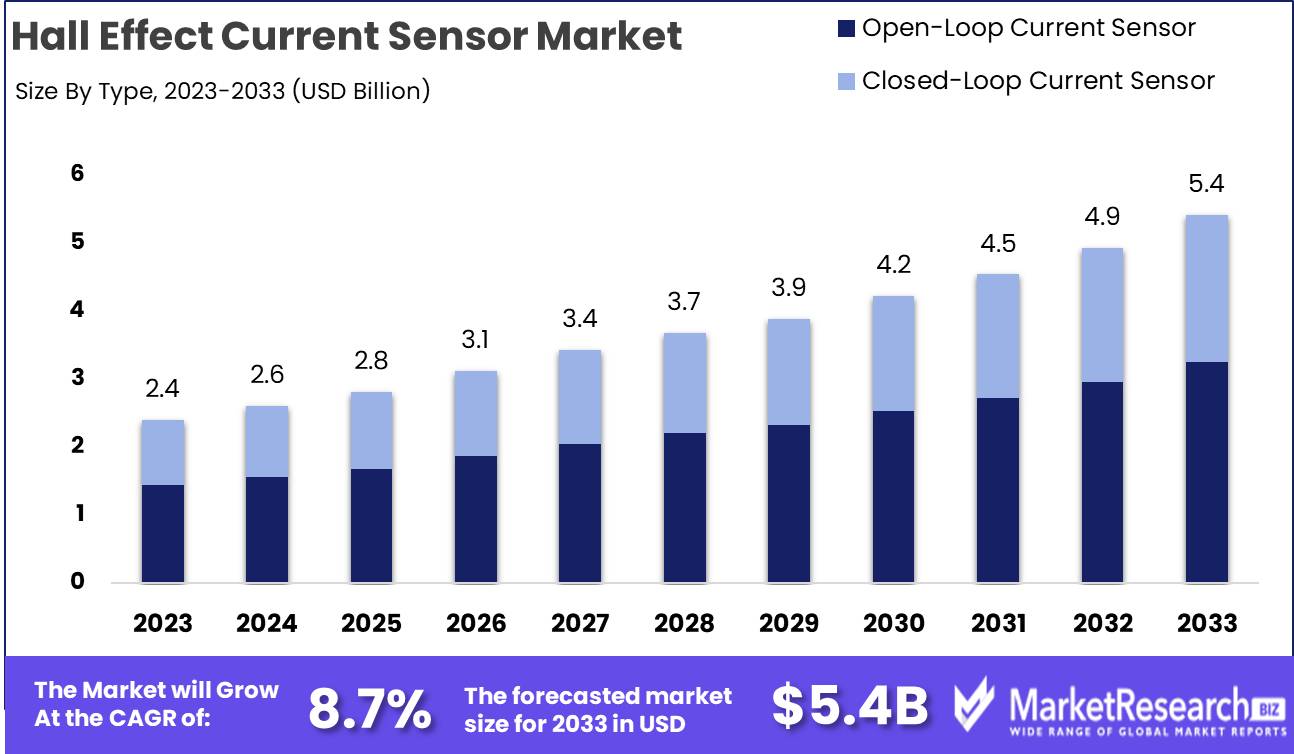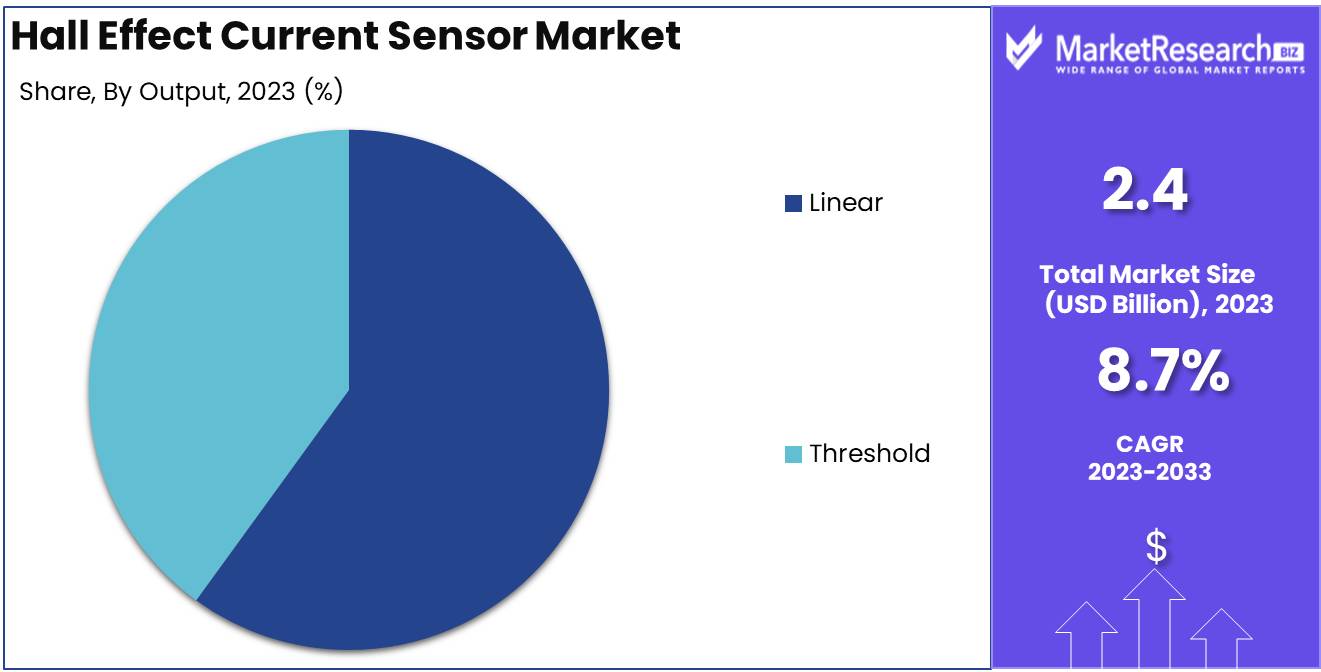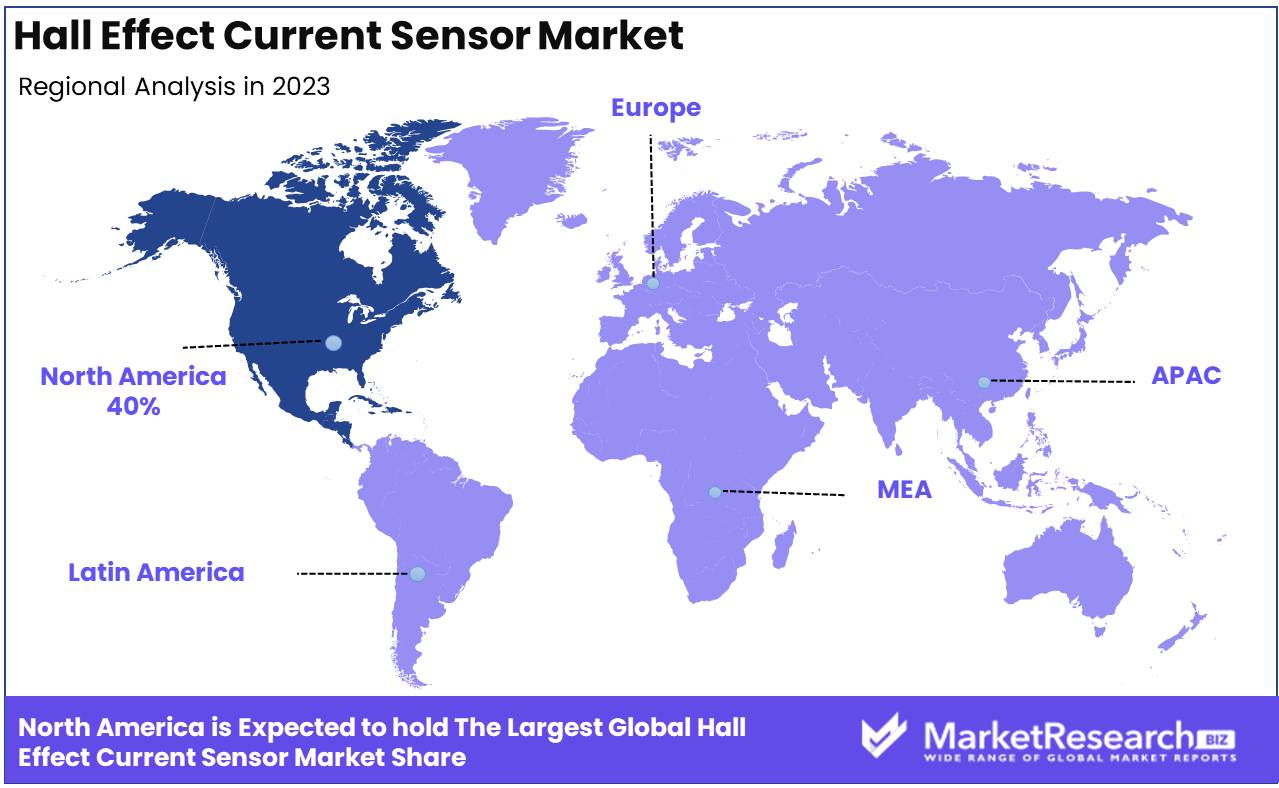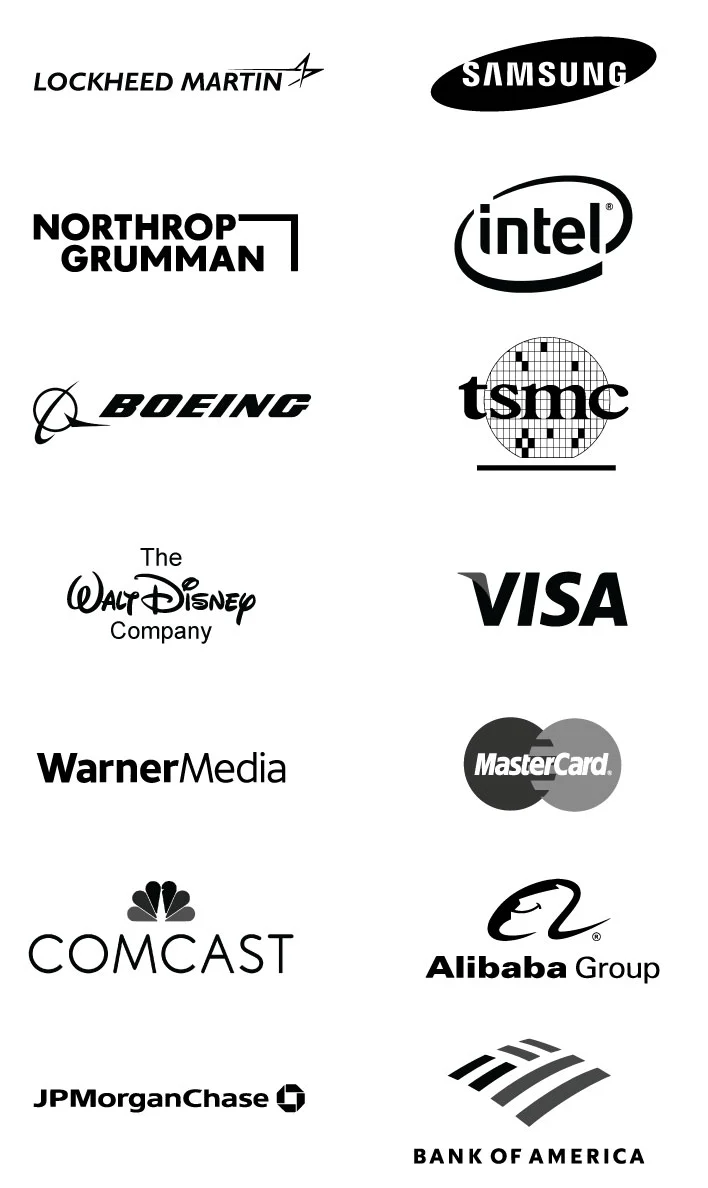
Hall Effect Current Sensor Market By Type (Open-Loop Current Sensor, Closed-Loop Current Sensor), By Technology (BiCMOS, CMOS), By Output (Linear, Threshold), By End-Use Industry (Industrial Automation, Automotive, Consumer Electronics, Telecommunication, Utilities, Others), By Region And Companies - Industry Segment Outlook, Market Assessment, Competition Scenario, Trends, And Forecast 2024-2033
-
50714
-
August 2024
-
300
-
-
This report was compiled by Vishwa Gaul Vishwa is an experienced market research and consulting professional with over 8 years of expertise in the ICT industry, contributing to over 700 reports across telecommunications, software, hardware, and digital solutions. Correspondence Team Lead- ICT Linkedin | Detailed Market research Methodology Our methodology involves a mix of primary research, including interviews with leading mental health experts, and secondary research from reputable medical journals and databases. View Detailed Methodology Page
-
Quick Navigation
Report Overview
The Hall Effect Current Sensor Market was valued at USD 2.4 billion in 2023. It is expected to reach USD 5.4 billion by 2033, with a CAGR of 8.7% during the forecast period from 2024 to 2033.
The Hall Effect Current Sensor Market refers to the industry centered around sensors that utilize the Hall effect to detect and measure electric current. These sensors are essential in providing accurate, non-contact current measurement, particularly in applications requiring high precision, such as electric vehicles, industrial automation, and consumer electronics.

The Hall Effect Current Sensor Market is experiencing a transformative shift driven by several key factors. The increasing adoption of these sensors in the automotive industry is a primary catalyst, as electric vehicles (EVs) and advanced driver-assistance systems (ADAS) increasingly rely on precise current sensing for battery management, motor control, and safety features. The market is further bolstered by the rapid growth in industrial automation, where Hall Effect sensors are integral to monitoring and controlling machinery operations, ensuring efficiency and reducing downtime.
However, the market faces significant competition from alternative technologies, such as shunt resistors and fluxgate sensors, which offer comparable performance at potentially lower costs. This competition is pushing manufacturers to innovate continuously, driving technological advancements that enhance the accuracy, reliability, and miniaturization of Hall Effect sensors.
Despite the competitive pressures, the Hall Effect Current Sensor Market is well-positioned for growth, with technological advancements acting as a critical enabler. Innovations in sensor design and materials are improving the sensitivity and robustness of these sensors, making them more attractive for use in harsh environments and critical applications. Additionally, the integration of Hall Effect sensors with digital signal processing capabilities is expanding their use cases, particularly in applications requiring real-time data analysis and decision-making. As industries increasingly prioritize energy efficiency and automation, the demand for reliable current sensing solutions is expected to rise, solidifying the Hall Effect Current Sensor Market's role as a pivotal component in the broader sensor landscape.
Key Takeaways
- Market Growth: The Hall Effect Current Sensor Market was valued at USD 2.4 billion in 2023. It is expected to reach USD 5.4 billion by 2033, with a CAGR of 8.7% during the forecast period from 2024 to 2033.
- By Type: Open-loop sensors dominated due to cost-effectiveness and versatility.
- By Technology: BiCMOS dominated Hall Effect Current Sensors, surpassing CMOS.
- By Output: Linear Hall Effect Sensors dominated due to EV and automotive demand.
- By End-Use Industry: Industrial Automation dominated the Hall Effect Current Sensor Market.
- Regional Dominance: North America dominates the Hall Effect Current Sensor Market, holding a 40% largest share.
- Growth Opportunity: The Hall Effect Current Sensor Market is poised for growth, driven by renewable energy expansion and robotics automation.
Driving factors
Electrification of Transportation Fuels Hall Effect Sensor Demand
The rapid growth in the electric vehicles (EVs) and hybrid electric vehicles (HEVs) market is significantly driving the demand for Hall Effect current sensors. As global environmental concerns rise and regulatory bodies enforce stricter emissions standards, the shift towards EVs and HEVs has accelerated. These vehicles require precise current measurement for battery management systems (BMS), motor control, and energy distribution, where Hall Effect current sensors play a crucial role due to their accuracy, reliability, and non-contact operation.
According to recent industry data, the global EV market is projected to grow at a CAGR of over 20% from 2023 to 2030, thereby boosting the Hall Effect current sensor market proportionally.
Industrial Automation Spurs Growth in Sensor Integration
The increasing adoption of industrial automation is another pivotal factor contributing to the growth of the Hall Effect current sensor market. As industries worldwide transition towards smart manufacturing and Industry 4.0, the demand for precise and efficient current sensing solutions has risen. Hall Effect sensors are increasingly integrated into automated systems for monitoring, control, and safety applications due to their robustness and ability to provide real-time feedback. The industrial automation sector is expected to expand at a CAGR of 9.2% from 2024 to 2030, which directly correlates with the rising use of Hall Effect current sensors in these systems.
Technological Advancements Enhance Sensor Performance
Advancements in software-defined architectures, topologies, and new materials are significantly enhancing the performance and applicability of Hall Effect current sensors. The development of more sophisticated software-defined systems has enabled better integration and functionality of these sensors within complex electrical systems.
Additionally, innovations in materials, such as the use of new semiconductor compounds, have led to improvements in sensitivity, temperature stability, and overall efficiency of Hall Effect sensors. These technological enhancements not only widen the application range of Hall Effect sensors but also improve their cost-effectiveness, making them a preferred choice in various emerging sectors. As a result, these advancements are expected to contribute to a sustained increase in market demand, supporting a projected market growth of over 8% CAGR through 2030.
Restraining Factors
Inconsistency in Magnetic Field Strength: A Barrier to Sensor Accuracy and Reliability
Inconsistency in magnetic field strength is a significant restraining factor for the Hall Effect Current Sensor Market. The accuracy and reliability of these sensors are highly dependent on the uniformity of the magnetic field in which they operate. Variations in magnetic field strength can lead to errors in current measurement, reducing the precision of the sensors. This inconsistency is particularly challenging in applications requiring high accuracy, such as in the automotive and industrial sectors, where even minor deviations can lead to significant performance issues.
As a result, the demand for Hall Effect current sensors may be hindered by the need for more advanced technologies or alternative solutions that can offer greater stability and accuracy. The necessity for precise calibration and compensation methods to mitigate this inconsistency further complicates the manufacturing process, potentially leading to increased costs and limiting market expansion.
Dependency on External Magnets: Increasing Costs and Design Complexities
The Hall Effect Current Sensor Market also faces constraints due to its dependency on external magnets. These sensors require an external magnetic field to function, often provided by magnets integrated into the sensor design. This dependency introduces several challenges. First, the cost of these magnets adds to the overall expense of the sensors, making them less competitive compared to alternative technologies that do not require external magnetic components.
Additionally, the integration of magnets into sensor systems increases design complexity, requiring additional space and potentially complicating the sensor's application in compact or space-constrained environments. This can limit the adoption of Hall Effect current sensors in certain industries where size and cost are critical factors. Furthermore, the quality and availability of suitable magnets can impact the production and performance consistency of these sensors, creating supply chain vulnerabilities that further restrain market growth.
By Type Analysis
In 2023, Open-Loop Sensors dominated due to cost-effectiveness and versatility.
In 2023, The Open-Loop Current Sensor held a dominant market position in the "By Type" segment of the Hall Effect Current Sensor Market. This sensor type is favored for its cost-effectiveness, simplicity in design, and ease of integration, which has led to its widespread adoption across various industries, particularly in automotive and consumer electronics. Open-loop sensors are known for their ability to measure DC, AC, and complex current waveforms without the need for magnetic core saturation, making them highly suitable for applications requiring broad dynamic ranges and minimal power consumption. The increasing demand for energy-efficient solutions in electric vehicles (EVs) and renewable energy systems further bolstered the growth of open-loop sensors.
Conversely, the Closed-Loop Current Sensor also captured significant market share, especially in applications demanding high accuracy, fast response times, and better linearity. These sensors are predominantly utilized in industrial automation, aerospace, and critical power management systems where precision is paramount. Although closed-loop sensors are more expensive, their superior performance in terms of accuracy and noise immunity continues to drive their adoption in high-end applications.
By Technology Analysis
In 2023, BiCMOS dominated Hall Effect Current Sensors, surpassing CMOS.
In 2023, BiCMOS held a dominant market position in the By Technology segment of the Hall Effect Current Sensor Market. This dominance can be attributed to BiCMOS technology's superior performance in handling both analog and digital signals, making it highly suitable for high-precision and high-speed applications in the automotive, industrial, and consumer electronics sectors. BiCMOS sensors offer enhanced noise immunity, reduced power consumption, and greater integration capabilities, which are critical in environments demanding high accuracy and reliability. The technology's ability to operate efficiently across a wide temperature range further strengthens its position in the market, particularly in automotive applications where extreme conditions are common.
CMOS technology, while also significant, primarily supports cost-sensitive and low-power applications. CMOS sensors are favored for their low-cost manufacturing processes and minimal power requirements, making them ideal for consumer electronics and portable devices. However, their relatively lower performance in terms of speed and precision compared to BiCMOS limits their use in high-end applications. Despite this, CMOS remains a key player in the market, particularly in segments where cost and power efficiency are prioritized over high performance.
By Output Analysis
Linear Hall Effect Sensors dominated due to EV and automotive demand.
In 2023, Linear Hall Effect Current Sensors held a dominant market position in the "By Output" segment of the Hall Effect Current Sensor Market. Linear sensors are widely adopted due to their ability to provide continuous and proportional analog output corresponding to the magnetic field strength. This feature is particularly advantageous in automotive applications, such as electric power steering and battery management systems, where precise current measurements are crucial. The increasing adoption of electric vehicles (EVs) has further fueled the demand for linear Hall Effect sensors, as they play a vital role in ensuring the efficiency and safety of EV powertrains.
Threshold Hall Effect Current Sensors also witnessed significant growth in 2023. These sensors, which provide a digital output signal when the magnetic field exceeds a certain threshold, are extensively used in applications requiring simple on/off detection, such as in consumer electronics and industrial automation. Their cost-effectiveness and reliability make them a preferred choice for designing switch-based circuits. The market growth in this segment is driven by the rising demand for energy-efficient devices and the integration of smart technologies in various consumer and industrial applications.

By End-Use Industry Analysis
In 2023, Industrial Automation dominated the Hall Effect Current Sensor Market.
In 2023, Industrial Automation held a dominant market position in the By End-Use Industry segment of the Hall Effect Current Sensor Market, driven by the increasing adoption of automation technologies across various industries. The demand for precise and reliable current sensing solutions in robotics, manufacturing, and process automation has propelled the growth of Hall Effect sensors in this sector. Automotive followed closely, with the rise in electric vehicles (EVs) and advanced driver-assistance systems (ADAS) requiring accurate current measurement for battery management and safety features.
Consumer Electronics also contributed significantly, as Hall Effect sensors are widely used in smartphones, laptops, and other portable devices for detecting lid closure and button press functions. The Telecommunication industry leveraged these sensors in network equipment and data centers for power management and fault detection. Utilities and Medical sectors utilized Hall Effect sensors for energy monitoring and medical device applications, respectively. Railways and Aerospace & Defense sectors adopted these sensors for traction control and avionics systems, emphasizing the broad applicability of Hall Effect sensors across diverse industries in 2023.
Key Market Segments
By Type
- Open-Loop Current Sensor
- Closed-Loop Current Sensor
By Technology
- BiCMOS
- CMOS
By Output
- Linear
- Threshold
By End-Use Industry
- Industrial Automation
- Automotive
- Consumer Electronics
- Telecommunication
- Utilities
- Medical
- Railways
- Aerospace & Defense
Growth Opportunity
Renewable Energy Applications
The global shift towards renewable energy sources presents a significant growth opportunity for the Hall Effect current sensor market. With the increasing deployment of solar panels and wind turbines, the demand for precise current measurement and monitoring solutions is on the rise. Hall Effect current sensors are ideal for these applications due to their ability to provide accurate, non-contact current sensing, even in harsh environments. The global renewable energy market is projected to grow at a CAGR of 8.3% from 2023 to 2028, further driving the adoption of Hall Effect sensors. This trend is expected to contribute significantly to market expansion as governments and organizations worldwide prioritize clean energy investments.
Robotics and Automation
The expanding robotics and automation sectors offer another promising opportunity for the Hall Effect current sensor market. As industries increasingly adopt automation to enhance efficiency and reduce labor costs, the demand for advanced current sensing solutions is escalating. Hall Effect sensors are crucial in robotic systems, providing real-time feedback on motor currents and ensuring the safety and reliability of operations. The global robotics market is forecasted to grow at a CAGR of 10.5% between 2023 and 2027, with industrial automation being a major contributor. This growth trajectory is anticipated to bolster the Hall Effect current sensor market, as manufacturers seek to integrate more sophisticated sensing technologies into their automation systems.
Latest Trends
Rising Adoption of Industrial Automation
The Hall Effect Current Sensor Market is poised to experience significant growth driven by the rising adoption of industrial automation. Industries are increasingly seeking efficient and reliable current sensing solutions to enhance their automation processes. Hall Effect sensors, known for their non-contact measurement capabilities and high accuracy, are becoming the preferred choice in automated systems, particularly in robotics, conveyor systems, and smart manufacturing. The trend towards Industry 4.0 and smart factories is further amplifying the demand for these sensors, as they play a crucial role in monitoring and controlling electric currents in various automated processes.
Advancements in Sensor Technology
Advancements in sensor technology are another key trend shaping the Hall Effect Current Sensor Market. Continuous innovation in sensor design and manufacturing is leading to the development of more compact, sensitive, and power-efficient Hall Effect sensors. These advancements are enabling broader applications in emerging sectors such as electric vehicles (EVs), renewable energy systems, and consumer electronics.
The integration of Hall Effect sensors in EV charging stations, solar inverters, and smart home devices is expected to drive market growth. Moreover, the ongoing research and development in semiconductor materials and magnetic field detection techniques are anticipated to further enhance the performance and versatility of Hall Effect sensors, solidifying their market presence.
Regional Analysis
North America dominates the Hall Effect Current Sensor Market, holding a 40% share.
The Hall Effect Current Sensor Market exhibits significant regional variation, with North America emerging as the dominant region, accounting for approximately 40% of the global market share. This dominance is attributed to the widespread adoption of electric vehicles (EVs) and advancements in industrial automation across the United States and Canada.
In Europe, the market is driven by stringent regulatory norms related to energy efficiency and the growing demand for renewable energy systems, capturing around 30% of the market. The Asia Pacific region, holding a 20% market share, is experiencing rapid growth due to the expansion of the consumer electronics industry and increasing investments in electric mobility, particularly in China and Japan.
The Middle East & Africa and Latin America collectively contribute to the remaining 10%, where industrial modernization and energy infrastructure developments are gradually creating opportunities for market expansion. While North America continues to lead, the growth trajectory in Asia Pacific suggests a potential shift in market dynamics, driven by the region's technological advancements and large-scale manufacturing capabilities. These regional trends underscore the global diversification of the Hall Effect Current Sensor Market, influenced by varying levels of technological adoption and regulatory frameworks across different regions.

Key Regions and Countries
North America
- The US
- Canada
- Rest of North America
Europe
- Germany
- France
- The UK
- Spain
- Netherlands
- Russia
- Italy
- Rest of Europe
Asia-Pacific
- China
- Japan
- Singapore
- Thailand
- South Korea
- Vietnam
- India
- New Zealand
- Rest of Asia Pacific
Latin America
- Mexico
- Brazil
- Rest of Latin America
Middle East & Africa
- Saudi Arabia
- South Africa
- UAE
- Rest of the Middle East & Africa
Key Players Analysis
The global Hall Effect current sensor market is poised for significant growth in 2024, driven by advancements in electric vehicles (EVs), industrial automation, and renewable energy applications. Key players such as ABB Ltd., Allegro MicroSystems Inc., Infineon Technologies AG, and TDK Corp. are expected to dominate the market, leveraging their extensive portfolios and technological innovations.
ABB Ltd. continues to expand its market share through strategic acquisitions and a strong focus on the electrification business. The company's robust R&D capabilities enable it to stay ahead in the development of high-precision sensors, catering to the increasing demand for efficient power management systems.
Allegro MicroSystems Inc. and Infineon Technologies AG are leading the charge in the automotive sector, where the adoption of Hall Effect current sensors is accelerating. These companies are capitalizing on their expertise in integrated circuit design and manufacturing, providing solutions that meet stringent automotive standards. Allegro's focus on magnetic sensor ICs and Infineon's advancements in smart power applications position them as key players in the electrification of vehicles.
TDK Corp. and STMicroelectronics NV are also pivotal in shaping the market landscape, particularly in industrial automation and consumer electronics. TDK's innovations in sensor miniaturization and STMicroelectronics' comprehensive product portfolio cater to the growing need for compact, energy-efficient solutions.
Overall, the competitive landscape is marked by technological innovation, strategic partnerships, and a focus on high-growth sectors, positioning these companies for sustained leadership in the global Hall-Effect current sensor market.
Market Key Players
- ABB Ltd.
- Allegro MicroSystems Inc.
- Asahi Kasei Microdevices Corp.
- Broadcom Inc.
- Infineon Technologies AG
- Kohshin Electric Corp.
- LEM Holding SA
- Measurlogic Inc.
- Melexis NV
- Neilsen Kuljian Inc.
- STMicroelectronics NV
- Tamura Corp.
- TDK Corp.
- Texas Instruments Inc.
- VACUUMSCHMELZE GmbH and Co. KG
Recent Development
- In June 2024, Infineon Technologies AG expanded its Hall-effect current sensor portfolio with the release of a new sensor family optimized for renewable energy systems. These sensors offer high accuracy and low power consumption, making them suitable for applications in solar inverters and wind turbine control systems.
- In May 2024, TDK Corporation launched a new series of Hall-effect current sensors with integrated overcurrent protection. These sensors are aimed at power supply and inverter applications, providing enhanced safety features and reducing the need for additional protective components in electrical circuits.
- In March 2024, Allegro MicroSystems introduced a new high-precision Hall-effect current sensor designed for automotive and industrial applications. This new sensor offers improved accuracy and reliability in harsh environments, catering to the growing demand for advanced current sensing solutions in electric vehicles and industrial automation.
Report Scope
Report Features Description Market Value (2023) USD 2.4 Billion Forecast Revenue (2033) USD 5.4 Billion CAGR (2024-2032) 8.7% Base Year for Estimation 2023 Historic Period 2016-2023 Forecast Period 2024-2033 Report Coverage Revenue Forecast, Market Dynamics, COVID-19 Impact, Competitive Landscape, Recent Developments Segments Covered By Type (Open-Loop Current Sensor, Closed-Loop Current Sensor), By Technology (BiCMOS, CMOS), By Output (Linear, Threshold), By End-Use Industry (Industrial Automation, Automotive, Consumer Electronics, Telecommunication, Utilities, Others) Regional Analysis North America - The US, Canada, Rest of North America, Europe - Germany, France, The UK, Spain, Italy, Russia, Netherlands, Rest of Europe, Asia-Pacific - China, Japan, South Korea, India, New Zealand, Singapore, Thailand, Vietnam, Rest of Asia Pacific, Latin America - Brazil, Mexico, Rest of Latin America, Middle East & Africa - South Africa, Saudi Arabia, UAE, Rest of Middle East & Africa Competitive Landscape ABB Ltd., Allegro MicroSystems Inc., Asahi Kasei Microdevices Corp., Broadcom Inc., Infineon Technologies AG, Kohshin Electric Corp., LEM Holding SA, Measurlogic Inc., Melexis NV, Neilsen Kuljian Inc., STMicroelectronics NV, Tamura Corp., TDK Corp., Texas Instruments Inc., VACUUMSCHMELZE GmbH and Co. KG Customization Scope Customization for segments at the regional/country level will be provided. Moreover, additional customization can be done based on the requirements. Purchase Options We have three licenses to opt for Single User License, Multi-User License (Up to 5 Users), Corporate Use License (Unlimited User and Printable PDF) -
-
- ABB Ltd.
- Allegro MicroSystems Inc.
- Asahi Kasei Microdevices Corp.
- Broadcom Inc.
- Infineon Technologies AG
- Kohshin Electric Corp.
- LEM Holding SA
- Measurlogic Inc.
- Melexis NV
- Neilsen Kuljian Inc.
- STMicroelectronics NV
- Tamura Corp.
- TDK Corp.
- Texas Instruments Inc.
- VACUUMSCHMELZE GmbH and Co. KG




